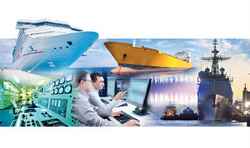
Posted to News on 1st Oct 2012, 16:44
Monitoring the condition monitoring system
Dirk Schulzer, Service Manager, Industrial Aftermarket Marine, Schaeffler, discusses the growing importance of automated, online condition monitoring (CM) systems for marine vessels and why it is critical to ensure that the CM system's health is monitored at all times

Condition monitoring (CM) has been used in the marine industry for many years, typically using data collectors operated by the ship's staff. However, with the advent of larger, more complex machinery, particularly on vessels such as large LNG carriers, automated online CM systems have become more popular.
The use of online CM systems has a major advantage in that remote monitoring and advice can be readily provided by fleet technical management, OEMs or shore-based CM specialists. Higher workloads and the reducing number of staff on modern ships also make remote monitoring more attractive. In the event of an alarm condition, an automated monitoring system will typically provide alarm text for the duty engineer in the ECR and an automatic notification to the remote monitoring facility. Trend and analysis data would also be transferred ashore for diagnostic purposes.
So far so good, but what happens if data is not received when it should be? It is not as easy as one might imagine to check that data is received when it should be. It is easy to focus on technical data analysis alone and overlook missing data. The worst-case scenario is that a major failure occurs with no alarm from the monitoring system. Investigation after the event often reveals that the system had not been online for some time and nobody had noticed the lack of data, or had assumed that the unit was down for maintenance.
Schaeffler has ongoing CM contracts with clients, ranging from industrial plants through to wind turbines, offshore and marine applications. To date, the marine sector has proven to be the most challenging of these. Schaeffler engineers have found that the support effort required to ensure that marine CM systems remain online actually outweighs the analytical requirement for fault diagnosis.
For example, consider a system that monitors the main engine turbocharger on a modern diesel electric cruise ship, which may have six engines and twelve turbochargers. The monitoring devices will pick up a tachometer signal from each turbocharger to track the speed and synchronise the analysis. This strategy ensures that "empty' data is not collected when the turbocharger is idle. On the cruise ship, the individual engines are stopped and started on a daily basis, depending on power requirements at the time for propulsion and hotel services. In addition, an engine might be stopped for maintenance, or a particular engine may be used in port only on low-sulphur fuel to minimise changing fuel types.
Systems to monitor the monitoring systems
Now consider how the onshore monitoring facility would receive this data. Perhaps it might receive data from the "A' bank turbocharger on a particular engine, but none from the "B' bank one. This would suggest a possible failure of the ship's tachometer, and the monitoring engineer would then contact the ship to request that it checks this, and state that this machine will not be monitored until the tachometer probe is replaced. There are many examples of this type of situation, and Schaeffler support staff has developed new administrative systems to monitor the monitoring systems.
It is now highly desirable that the CM system's health is monitored starting from the transducer taking measurements through to the receipt of data at the monitoring centre. If a transducer or its cable is damaged, for example, the next data set sent from the ship can contain an error message indicating this fault. The monitoring computer should be able to send a daily message to the local monitoring boxes in the engine room to check that communications are intact. The monitoring computer should also send a daily "still alive' message to the monitoring centre.
It is only by attention to detail in these areas that remote monitoring systems can achieve the reliability and give ship operators complete confidence. For more information about online condition monitoring (CM) systems, please email [email protected] or visit the website at www.schaeffler.co.uk.
Want the latest machine building news straight to your inbox? Become a MachineBuilding member for free today >>















